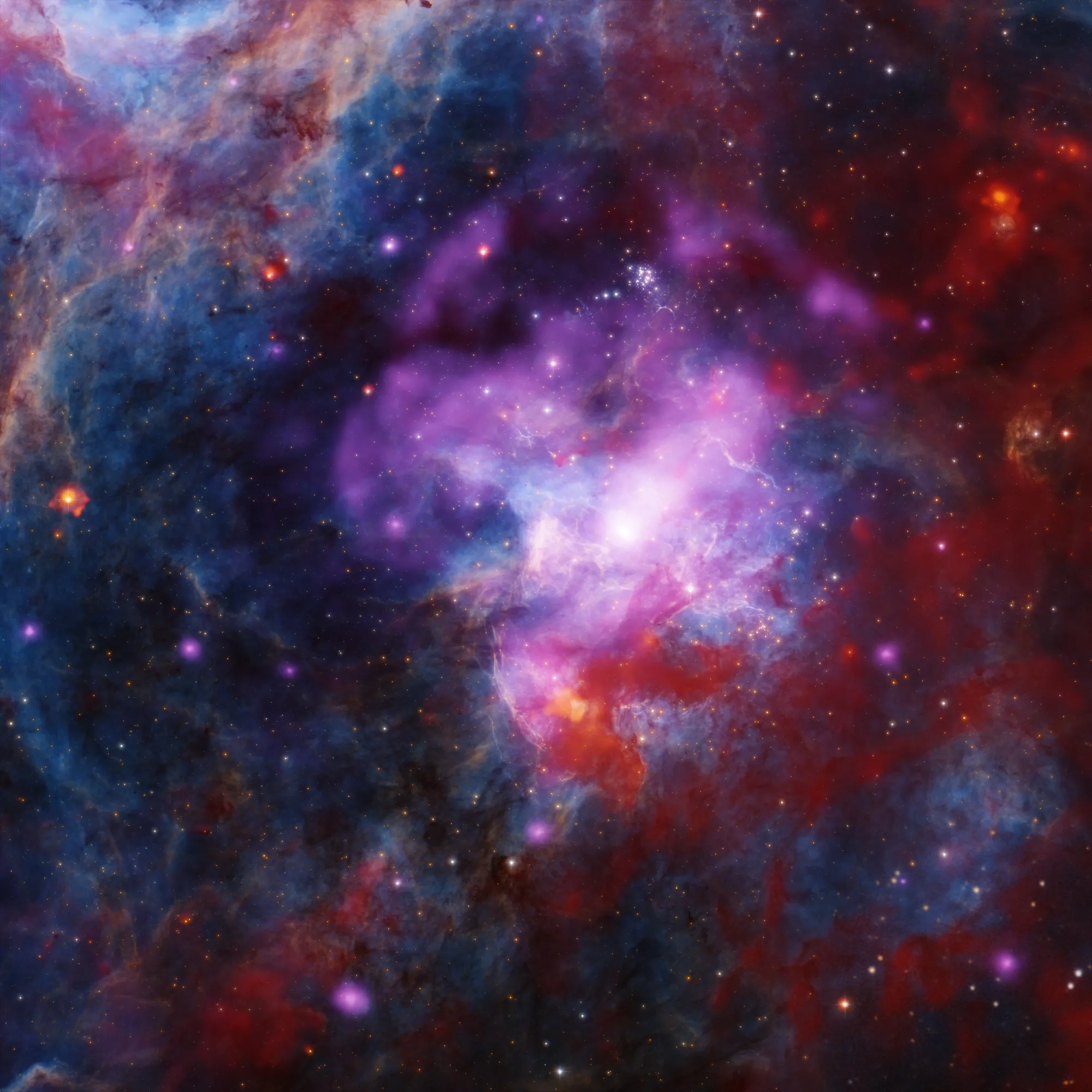NASA has published a colorful image of the 30 Doradus B nebula. Analysis of the image shows that it is the creation of not one but at least two exploding stars.

The 30 Doradus B nebula is located 160 thousand light-years from Earth in the Large Magellanic Cloud, a small satellite galaxy of the Milky Way. It is part of a much larger complex known as the Tarantula Nebula. This is a vast region of ionized hydrogen where new stars have been actively forming for the last 8–10 million years.
As part of the new 30 Doradus B study, astronomers combined X-ray data from the Chandra telescope (purple), optical data from the Blanco 4-meter telescope (orange and blue), and infrared data from the Spitzer telescope (red). Hubble telescope data was also added to them in black and white to highlight the sharp features in the image.
As a result, scientists managed to obtain the most detailed image of the nebula in history. Its analysis revealed the presence of a weak shell, which is a source of X-ray radiation. Its diameter is about 130 light-years. For comparison, the star closest to the Sun is about 4 light-years away. The Chandra data also showed the presence of charged particles emitted by the pulsar.
Comparing these data with the results of observations from other telescopes, the researchers concluded that a single supernova explosion could not explain what they saw. Both the pulsar and the bright X-ray radiation at the center of 30 Doradus B most likely appeared as a result of the collapse of a massive star that happened about 5,000 years ago. However, the larger, faint shell of X-rays is too big to be the result of the explosion of the same supernova.
Instead, the team believes that at least two supernova explosions occurred in 30 Doradus B, with the X-ray shell formed by another supernova that exploded more than 5,000 years ago. It is quite possible that there were even more of them in the past. This result may help astronomers learn more about the life and death of massive stars.
According to https://www.nasa.gov
Follow us on Twitter to get the most interesting space news in time
https://twitter.com/ust_magazine


